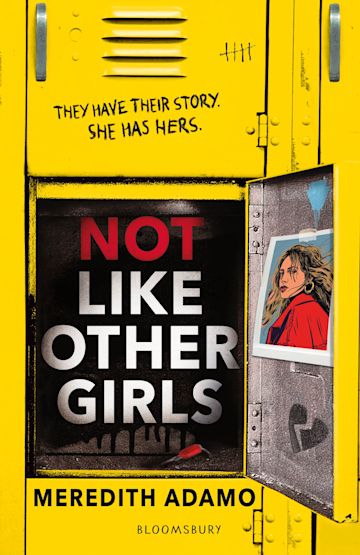Writers & Artists spoke to Meredith Adamo about the UK publication of her debut YA thriller Not Like Other Girls.

How long does it take to plan and write a story like Not Like Other Girls?
Not Like Other Girls was the first novel I ever wrote, so I think on top of learning how to write this book, I was also learning how to write a book—which is all to say it took me a very, very long time and many rewrites! It’s probably close to seven or eight years from the time I decided that this was the novel I wanted to write until its publication day.
I tend to think of Not Like Other Girls as a coming-of-age story wrapped in a mystery: it’s about Jo, the main character, investigating what happened to her ex-best friend Maddie after she vanishes, but it’s also about Jo trying to find herself again as she reckons with a traumatic event she’d rather forget. Seamlessly weaving these threads together was easily my biggest challenge of the writing process.
For years, I drafted using only a rough outline, but I still felt stuck. I ultimately devised a color-coded revision system using lots of sticky notes, and I read through the draft and identified how every scene propelled both the mystery plot and Jo’s internal arc to give myself a clearer vision of the project as a whole. Just like that, I was able to completely overhaul Not Like Other Girls in six months.
Thrillers have to keep readers on the edge of their seats and constantly guessing. What advice would you give to fellow thriller writers who are looking to create a story that has an exciting, perhaps unexpected payoff, for readers?
I find that character and pacing are both key to that satisfying reveal for readers. When I was creating these characters—or, in this case, these suspects—I wanted their motives to explain their possible guilt, of course, but also offer a valid reason for their innocence. I think that focusing on readers for doubt is just as powerful as focusing on reasons for guilt.
Then for pacing, I always knew what my major plot beats would be around the midpoint, the climax, and that final twist, but I actually added in tiny clues and red herrings during the last stages of my revisions. By then, I had a sense of the full scope of the mystery, so it was easier for me to pace out the small details that readers may overlook on a first read but make for an extra satisfying reread when they realize the clues were there all along.
The book is set in your home city of Rochester, NY What advice might you have for authors who want to showcase a setting that they know inside out, but might be unfamiliar to readers?
At first, I got hung up on the details and ended up being almost too specific because I knew that few readers would know Rochester like I do. But I realized that what I really wanted to capture was that feeling of being seventeen and wanting badly to leave your hometown, but not knowing what’s next. I tried to match those identifiable emotions with the real places I love so much so that even readers who have never been to, say, Cobbs Hill Reservoir, where Jo and her love interest eat Garbage Plates—a Rochester delicacy!—and watch the city lights, can still relate to that nervous feeling of being close to your crush on a beautiful night.
How do you approach creating characters?
I like to distill my characters into recognizable roles—the golden boy basketball star; the nice, awkward nerd; the clique of mean girls—and subvert the expectations of that role.
So, what happens when the golden boy, like Jo’s older brother, gets injured and has to miss the basketball season? How does that new obstacle change the way he occupies the world of this story, and his relationship with Jo? And most importantly, how does it relate to the mystery of what happened to Maddie? I think that adding a twist on these common archetypes really helps to ground readers and, I hope, surprise them.
What do you hope readers might take away from Not Like Other Girls?
I’d love for readers to be so invested in the mystery of what happened to Maddie that they just need to keep reading, but I also hope readers, especially young women, feel seen by a character like Jo, who is imperfect but trying her best. My biggest hope, truly, is that Not Like Other Girls reaches readers who need it, when they need it, and that it offers them a lifeline to better understand their experiences.
Comments